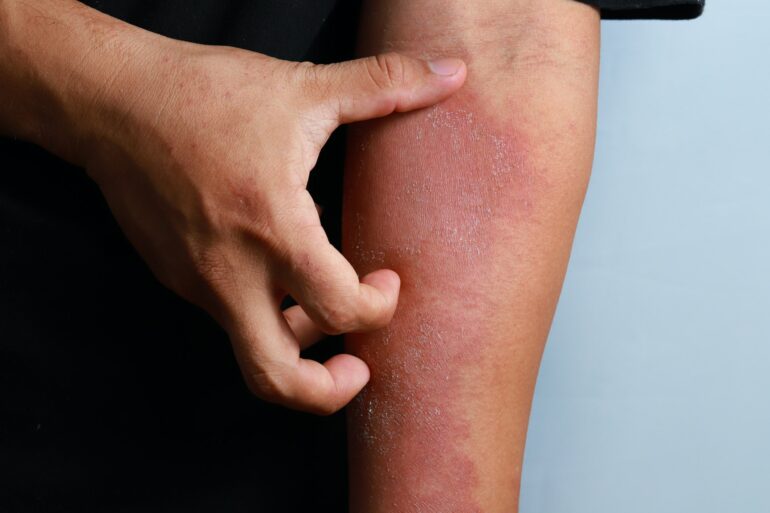Rashes can be thought of as a dysfunctional community of skin cells. Your skin harbors dozens of distinct cell types, including those that form blood vessels, nerves and the local immune system of the skin. For decades, clinicians have largely been diagnosing rashes by eye. While examining the physical appearance of a skin sample under a microscope may work for more obvious skin conditions, many rashes can be difficult to distinguish from one another.
At the molecular level, however, the differences between rashes become more clear.
Scientists have long known that molecular abnormalities in skin cells cause the redness and scaliness seen in conditions like psoriasis and eczema. While almost all the various cell types in your skin can release chemicals that worsen inflammation, which ones leads to rash formation remains a mystery and may vary from patient to patient.
But molecular testing of skin rashes isn’t a common practice because of technological limitations. Using a new approach, my colleagues and I were able to analyze the genetic profiles of skin rashes and quantitatively diagnose their root causes.
Skin is a complex organ that performs a wide variety of functions.
High-res skin profiles
Traditional genetic analyses work by averaging out the activity of thousands of genes across millions of cells.
Genetically testing tissue samples is standard practice for conditions like cancer. Clinicians collect and analyze tumor biopsies from patients to determine a particular cancer’s unique molecular characteristics. This genetic fingerprint helps oncologists predict whether a cancer will spread or which treatments might work best. Cancer cells lend themselves to this form of testing because they often grow into recognizable masses that make them easy to isolate and analyze.
But skin is a complex mixture of cells. Collapsing these unique cell communities into a single group may obscure genetic signatures essential to diagnosis.
Recent technological advances called single-cell RNA sequencing, however, have enabled scientists to preserve the identity of each type of cell that lives in the skin. Instead of averaging the genetic signatures across all cell types in bulk, single-cell RNA sequencing analyses allow each cell to preserve its unique characteristics.
Single-cell RNA sequencing is used to analyze samples where many different types of cells are present.
Using this approach, my colleagues and I isolated over 158,000 immune cells from the skin samples of 31 patients. We measured the activity of about 1,000 genes from each of those cells to create detailed molecular fingerprints for each patient. By analyzing these fingerprints, we were able to pinpoint the genetic abnormalities unique to the immune cells residing in each rash type. This allowed us to quantitatively diagnose otherwise…
